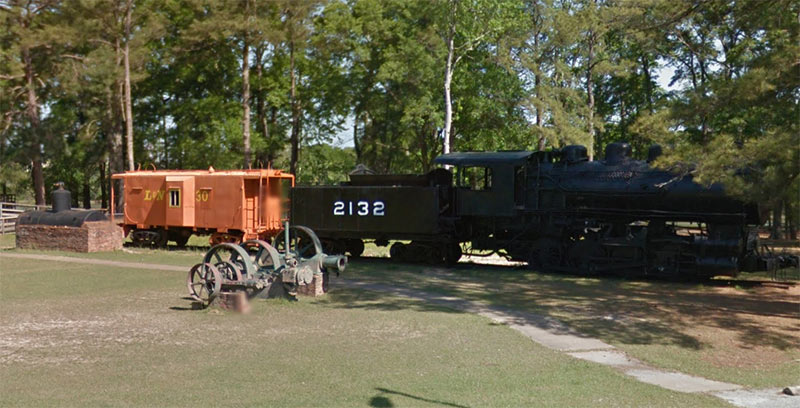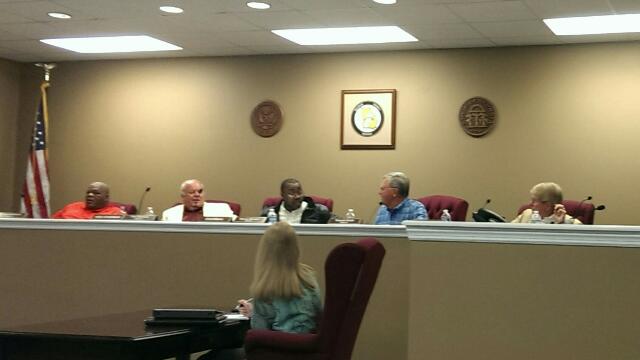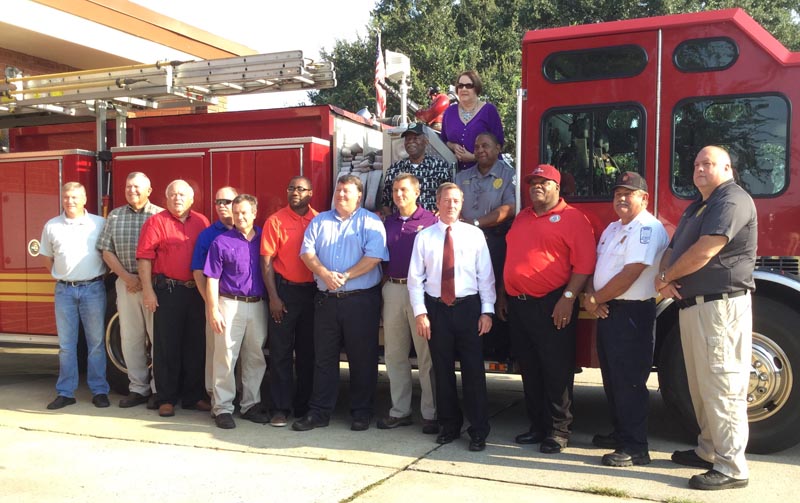

At its Tuesday meeting, the Bainbridge City Council will host some visitors from Corbin, Kentucky, who are interested in acquiring the old train engine that is located in Bainbridge’s Earle May Boat Basin.
While no City of Bainbridge officials have indicated an opinion on the matter so far, the idea of the train engine leaving the Boat Basin has some Bainbridge citizens upset.
The engine was originally built in 1922 by the Louisville and Nashville Railroad. At one point, it was at risk for being scrapped for iron, but in 1951, it was sold to the Gulf Power Company, which used it for switching duties at a power plant on the Apalachicola River a few miles south of Chattahoochee, Florida.
Sometime around 1980, former Bainbridge Mayor Bill K. Reynolds heard that the engine had fallen into disrepair. Reynolds decided to save it, and the train was moved from Sneads, Fla., in several pieces and put back together, along with some rails, for display at the Boat Basin. (see article about history of Bainbridge’s train engine at railga.com)
For more than 30 years, the train has been a point of interest for visitors to the Boat Basin. Children visiting the goats and emus, who are kept in a pen at the Boat Basin, also make their way over to the train with parents in tow. The sawmill parts near the train are from the Farrar Saw Mill that was located just east of Bainbridge on Shotwell Street, according to local historian Frances Willis.
The Bainbridge City Council will hear a presentation from Corbin, Kentucky, tourism officials at its meeting on Tuesday, Jan. 20 at 6:30 p.m. at City Hall, 101 S. Broad Street.

Although the train engine was never used in Bainbridge, its presence here for the last three decades has given it significance as a local attraction, according to people who support the train staying in Bainbridge. Other arguments include the fact that the railroad industry in general was important in the development of Decatur County and its municipalities, and the fact that the train had effectively been abandoned until City of Bainbridge leaders saved it and restored it.
One of the “cons” of keeping the train would be any cost and effort spent to maintain its condition. For example, the train regularly needs repainting, and there have been “nuisance issues” such as graffiti and wasp nests on the train. Some of the people who argue to keep the train say the City of Bainbridge should step up and pay for the train’s upkeep.
Corbin, Kentucky, is a town with a population of 7,272, that is located next to the Daniel Boone National Forest, about 67 miles north of Knoxville, Tenn. The town is renovating a historic museum located in the town’s old railroad depot. It happens that the engine in Bainbridge’s Boat Basin, known as Louisville and Nashville 2132, is one of three steam locomotives still in existence that operated in the Corbin area.
For this reason, the Corbin Tourism Commission would like to acquire the train engine for display along with other train cars at its historic museum. (See related article in the Corbin, Ky., News-Journal).
In the Corbin newspaper article, an official with the city’s tourism commission said they may negotiate a trade with the city or ask that it be donated free of charge. It remains to be seen whether or not the Bainbridge City Council would be willing to do that.
Bainbridge City Council comments
City Councilwoman Roslyn Palmer:
When the city manager first mentioned this to me a couple of months ago I voiced my opposition. That position hasn’t changed. I think we can clean it up and perhaps consider a tall fence to keep damage and abuse down.
[In a phone call, Councilwoman Palmer expressed that she believes the train engine and caboose are assets to promoting tourism to Bainbridge. She believes the city council should keep up the train and possibly place a fence around part of it to prevent vandalism and graffiti.]
City Councilman Luther Conyers:
I am waiting to see what the people from Corbin have to say before giving my full opinion. However, I will say that it took a lot of work by a lot of people to bring the train engine here in the first place. Yes, it might cost us some to maintain it in good shape, but it would cost even more to have the train moved to Kentucky. I think the train is part of our history since we took responsibility for it.
City Councilman Don Whaley:
My understanding is that the people from Corbin will make their presentation and formally request transferring ownership of the train. I haven’t talked to any council members who have said we should take any action at this point other than to hear what they have to say…I’ve heard from several citizens. A couple who said they don’t want the city to spend taxpayer money to keep up the train, and others who said they enjoy going to visit it with their kids and grandchildren, who feel like it has become part of Bainbridge…From what I understand, the people in Corbin want to clean up the train and restore it, and place it in a railroad museum. If we decide to keep it here, someone–either the city or a citizen group–should commit to taking care of the train, because of its historical value.
Whaley continued, “We do welcome any and all citizens’ input on the train engine. I hope people who are passionate about it will come to the meeting, hear the presentation, and speak their opinion.”
City Councilman Phil Long:
Officials from Corbin have written letters and emails to us over the past couple of months, addressed to the council. [The City Council] has known about their request for a couple of months. The people from Corbin have visited us once before to take pictures of the train and make sure it was the one that was used in their community in the past…I have not made up my mind to vote on this one way or the other. I do recognize that from what the people in Corbin say, that this train was used in their town and it has ties to their community…people who are for keeping the train should go take a look at it and see what kind of shape it is in. It has graffiti and is being used for things that are not healthy. If we keep the train, it will need a lot of work.
Long said he would also like to hear from citizens. He can be reached by email at phill@bainbridgecity.com (that’s phill with two l’s) or you can also reach him by phone at (229) 254-2300.
City Councilwoman Glennie Bench:
The council has not made its decision on the issue. My understanding of the process is that we will hear from the representatives from Corbin and any of our citizens who are there to speak on the matter. Whether or not the issue will come to a vote tomorrow is also something that is not predetermined.
I have heard from citizens on the issue – several have commented that while the train has been an interesting feature at the Boat Basin, the train doesn’t represent Bainbridge to them – nor does it represent Mayor Bill Reynolds’ legacy to them – so they would be in favor of letting Corbin have it as long as we would not bear any expense in conveying it back to them. Others have said they think we should keep the train but they have conceded that they don’t know how much it costs to maintain it annually. Still others have said they don’t have an opinion one way or the other.
Although I haven’t decided where I stand on the issue, I think the factors to be considered are similar to the citizens’ opinions I mentioned earlier – the train’s connection to Bainbridge, past and present; our ability to maintain it for years to come as a feature of the park; costs associated with keeping it and costs associated with giving it to Corbin; and whether there are there better alternatives that families can enjoy.




Be the first to comment